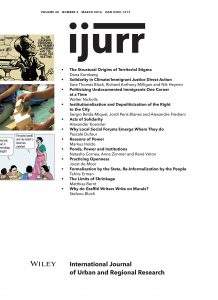Pirates, Terrorists, and Asymmetric Power
by christinablunt
 On Wednesday, April 8, a U.S. container ship, the Maersk Alabama, was commandeered by a group of Somali pirates in the Indian Ocean. The Maersk Alabama was quickly recovered but the captain, Richard Phillips, was held hostage by four of the pirates on a lifeboat for several days. Negotiations were conducted between the marauders and the American destroyer, the U.S.S. Bainbridge. On April 12, acting with President Obama’s authorization and the belief that Captain Phillips was in imminent danger, U.S. snipers shot the 3 pirates that remained aboard the life vessel and rescued the Captain shortly there after. On April 21 the sole survivor was brought to New York and will face trial as an adult on charges of piracy.
On Wednesday, April 8, a U.S. container ship, the Maersk Alabama, was commandeered by a group of Somali pirates in the Indian Ocean. The Maersk Alabama was quickly recovered but the captain, Richard Phillips, was held hostage by four of the pirates on a lifeboat for several days. Negotiations were conducted between the marauders and the American destroyer, the U.S.S. Bainbridge. On April 12, acting with President Obama’s authorization and the belief that Captain Phillips was in imminent danger, U.S. snipers shot the 3 pirates that remained aboard the life vessel and rescued the Captain shortly there after. On April 21 the sole survivor was brought to New York and will face trial as an adult on charges of piracy.
Our fascination with pirates may be historical or, perhaps, part of the hidden fantasy of taking to the high seas and living life with reckless abandon. However, it may have to do with the seemingly asymmetric power dynamic between 4 Somalis on a life boat and a U.S. destroyer with a direct line to President Obama.
The standoff between the U.S. Armed Forces and three pirates on a dingy is a very interesting example of the sort of asymmetric combat currently engaged in all over the world. While there seem to be many differences in this case between terrorists and pirates, including their motivation and overall goals, one important commonality is the way in which a super-power engages them. The asymmetry in this particular instance was starker than in others but it causes one to consider, in a time when sheer might is (perhaps only slightly) decreasing as an indicator of power in global relations, how will Sociologists conceive of power in the 21st century?
![]() Link to the story in the Guardian.
Link to the story in the Guardian.
![]() Link to Teaching & Learning Guide for: Sociology of Terrorism and Counterterrorism: A Social Science Understanding of a Terrorist Threat
Link to Teaching & Learning Guide for: Sociology of Terrorism and Counterterrorism: A Social Science Understanding of a Terrorist Threat
![]() Link to the Blackwell Reference Online: Power by Steven Lukes
Link to the Blackwell Reference Online: Power by Steven Lukes





1475-682X/asset/akdkey.jpg?v=1&s=eef6c6a27a6d15977bc8f9cc0c7bc7fbe54a32de)
This is an interesting post. It is also interesting that there is still an attempt to portray vulnerability–of the superpower but not the pirates. I wonder if this is also a common pattern?
Keri